|
|
To see other cavity nester bios/photos:
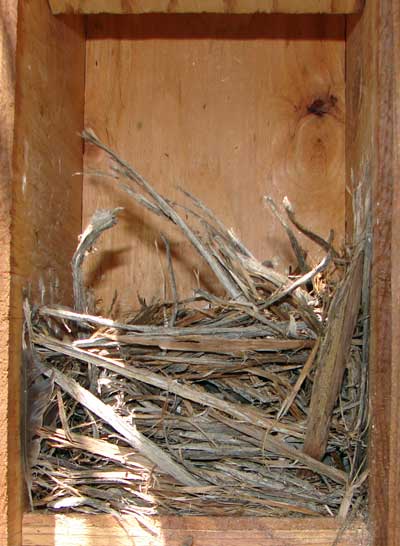 |
Left: Mountain Bluebird (MOBL) nest. Photo below: Another MOBL nest, built to compensate for a box that was out of plumb. Photos by Zell Lundberg of Coaldale, CO, 05/17/08.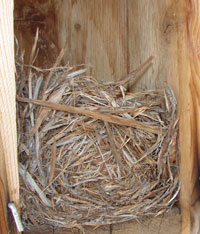 MOBL and Western Bluebird (WEBL) nests are typically ‘messier’ than Eastern Bluebird nests. Nest Description: Nest of grass, weed stems, pine needles, twigs, rootlets, bark, and, sometimes, wool, hair, or feathers. MOBL and Western Bluebird (WEBL) nests are typically ‘messier’ than Eastern Bluebird nests. Nest Description: Nest of grass, weed stems, pine needles, twigs, rootlets, bark, and, sometimes, wool, hair, or feathers. |
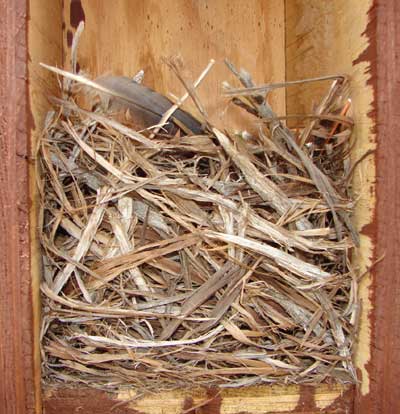 |
Another MOBL nest, photo by Zell Lundberg. There is a Band-tailed Pigeon feather on the left. In this area, there isn’t much in the way of grass or other soft greenery for the birds to use for lining, so mostly the cup is made of strips of bark that are slightly finer (no animal hair either) and an occasional feather. |
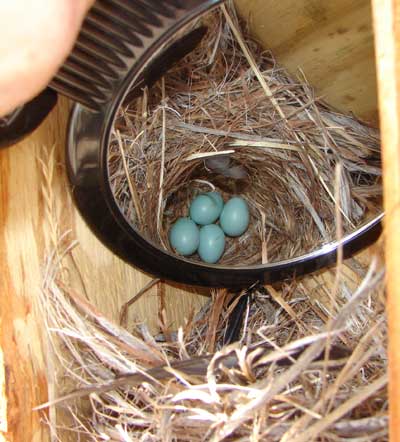 |
Mountain Bluebird nest with eggs. Photos by Zell Lundberg of Coaldale, CO, 05/17/08.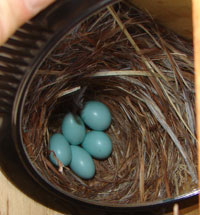 Egg Description: Eggs are smooth, glossy, unmarked, and are pale blue, bluish-white, or, rarely, white. Egg Description: Eggs are smooth, glossy, unmarked, and are pale blue, bluish-white, or, rarely, white. |
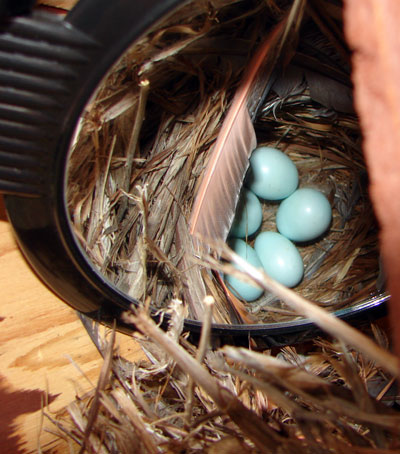 |
MOBL nest with lighter blue eggs. Photo by Zell Lundberg of Coaldale, CO. Notice the Northern Flicker feather draped festively across the edge of the nest. |
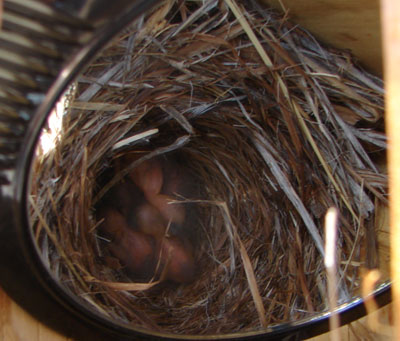 |
MOBL nestlings on Day 0. Photo by Zell Lundberg. |
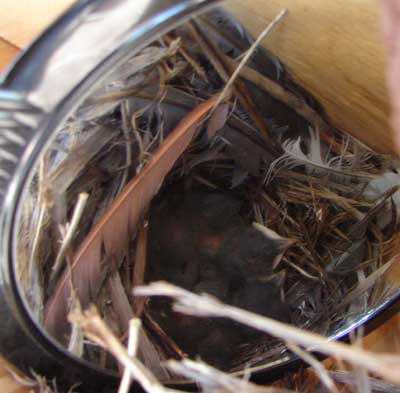 |
MOBL nestlings about 3-4 days old. This nest has a Northern Flicker feather, some gray feathers (Band-tailed pigeons?) and what look like white chicken feathers. Photo by Zell Lundberg. |
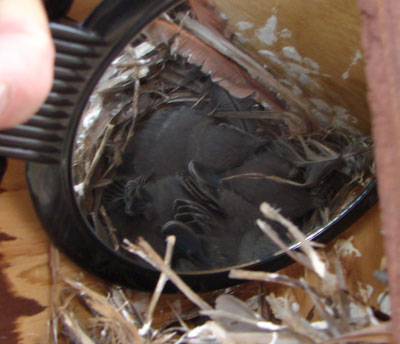 |
Photo by Zell Lundberg. These nestlings are probably about 11-12 days old. |
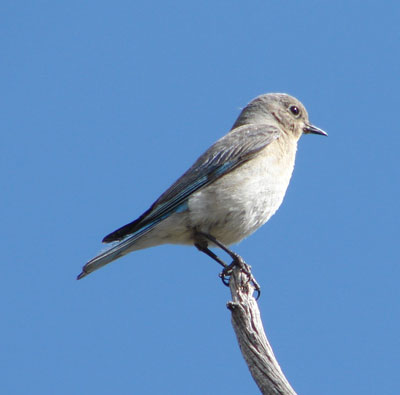 |
MOBL female, adult. Photo by Zell Lundberg. |
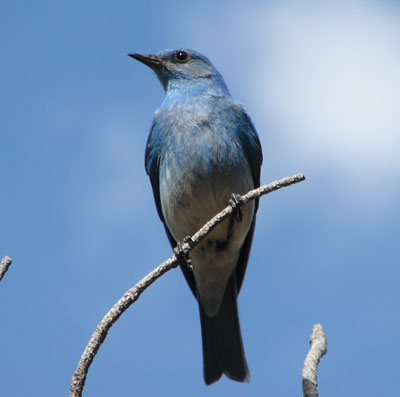 |
MOBL male, adult. Photo by Zell Lundberg. |
MORE INFORMATION & RESOURCES:
- Mountain Bluebird Biology
- Mountain Bluebird coloring page
- All About Eastern Bluebirds
- Eastern Bluebird photos
- All about Western Bluebirds
- Western Bluebird photos
The student of Nature wonders the more and is astonished the less, the more conversant he becomes with her operations; but of all the perennial miracles she offers to his inspection, perhaps the most worthy of admiration is the development of a plant or of an animal from its embryo. -Thomas Henry Huxley, British biologist and educator. Reflection #54, Aphorisms and Reflections, selected by Henrietta A. Huxley, Macmillan, 1907.
